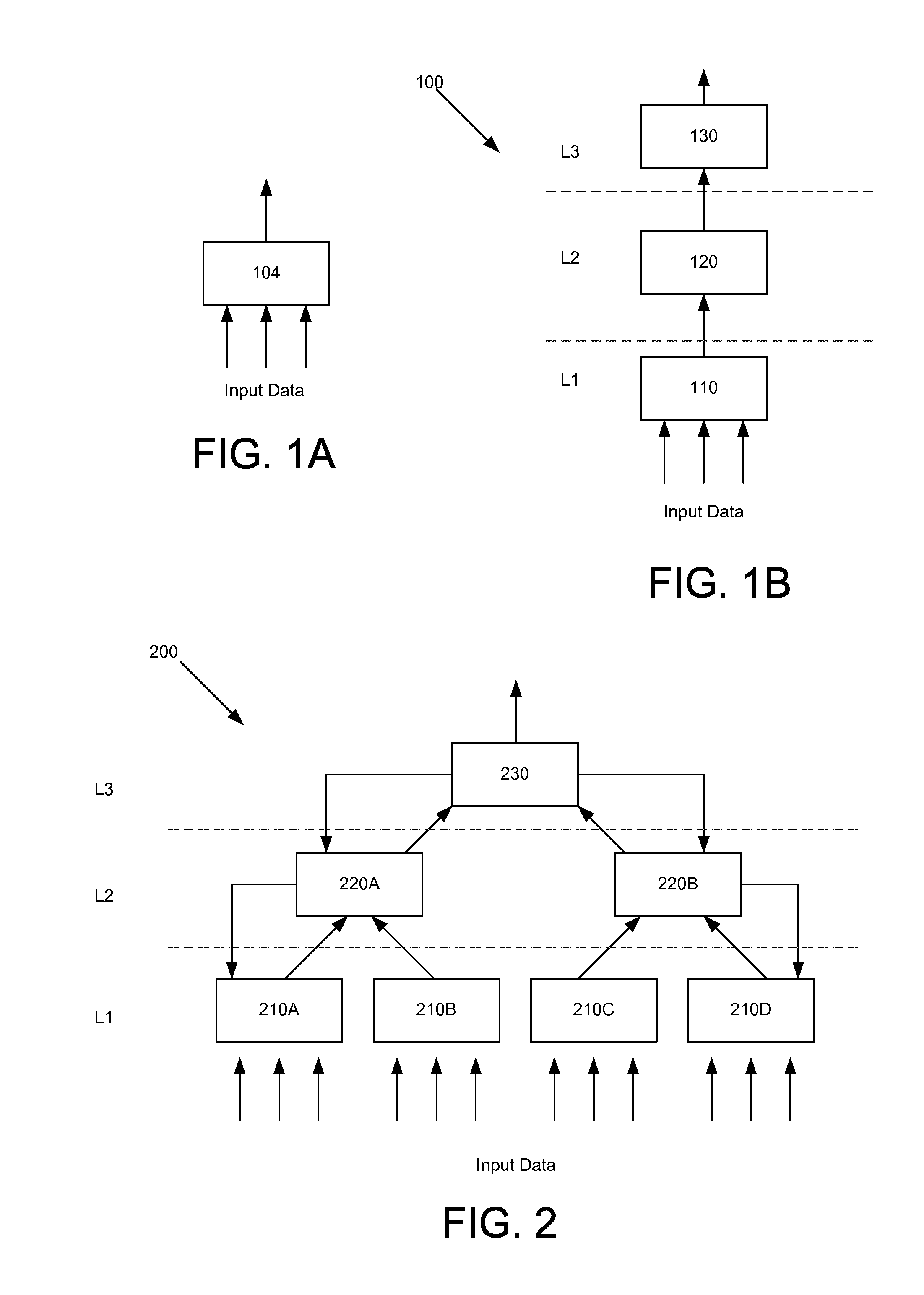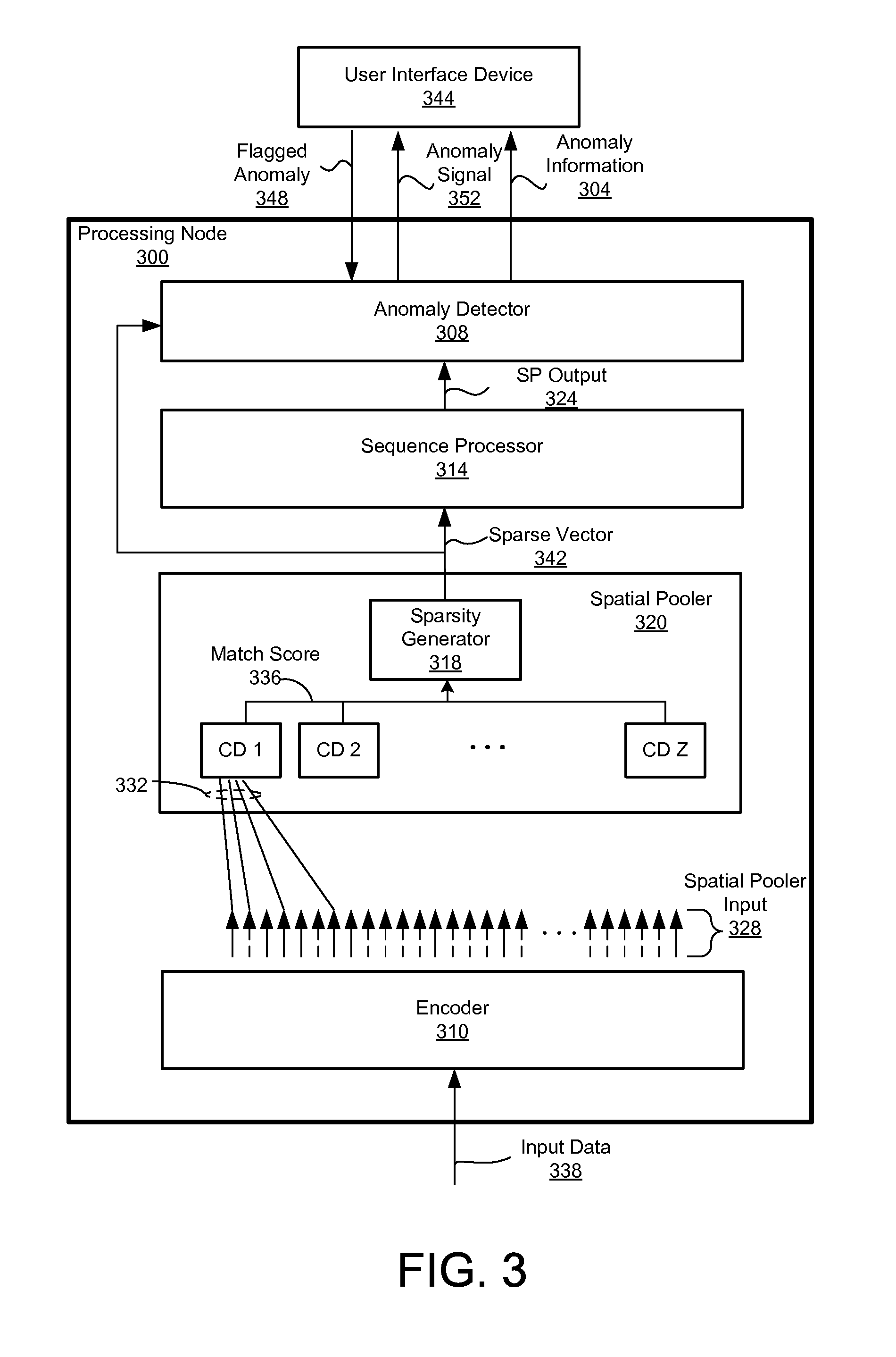Anomaly detection in spatial and temporal memory system
a memory system and spatial and temporal memory technology, applied in the field of detecting temporal sequences, can solve the problems of imperfect predictive models, data is not always predictable, and prediction made using predictive models will often deviate from the actual value or state being predicted
- Summary
- Abstract
- Description
- Claims
- Application Information
AI Technical Summary
Benefits of technology
Problems solved by technology
Method used
Image
Examples
Embodiment Construction
[0026]In the following description of embodiments, numerous specific details are set forth in order to provide more thorough understanding. However, note that the present invention may be practiced without one or more of these specific details. In other instances, well-known features have not been described in detail to avoid unnecessarily complicating the description.
[0027]A preferred embodiment is now described with reference to the figures where like reference numbers indicate identical or functionally similar elements. Also in the figures, the left most digits of each reference number corresponds to the figure in which the reference number is first used.
[0028]Embodiments relate to detecting patterns and sequences associated with an anomaly in predictions made by a predictive system (e.g., a spatial and temporal memory system). The predictive system makes predictions by learning spatial patterns and temporal sequences in an input data that change over time. As the input data is r...
PUM
 Login to View More
Login to View More Abstract
Description
Claims
Application Information
 Login to View More
Login to View More - R&D
- Intellectual Property
- Life Sciences
- Materials
- Tech Scout
- Unparalleled Data Quality
- Higher Quality Content
- 60% Fewer Hallucinations
Browse by: Latest US Patents, China's latest patents, Technical Efficacy Thesaurus, Application Domain, Technology Topic, Popular Technical Reports.
© 2025 PatSnap. All rights reserved.Legal|Privacy policy|Modern Slavery Act Transparency Statement|Sitemap|About US| Contact US: help@patsnap.com



